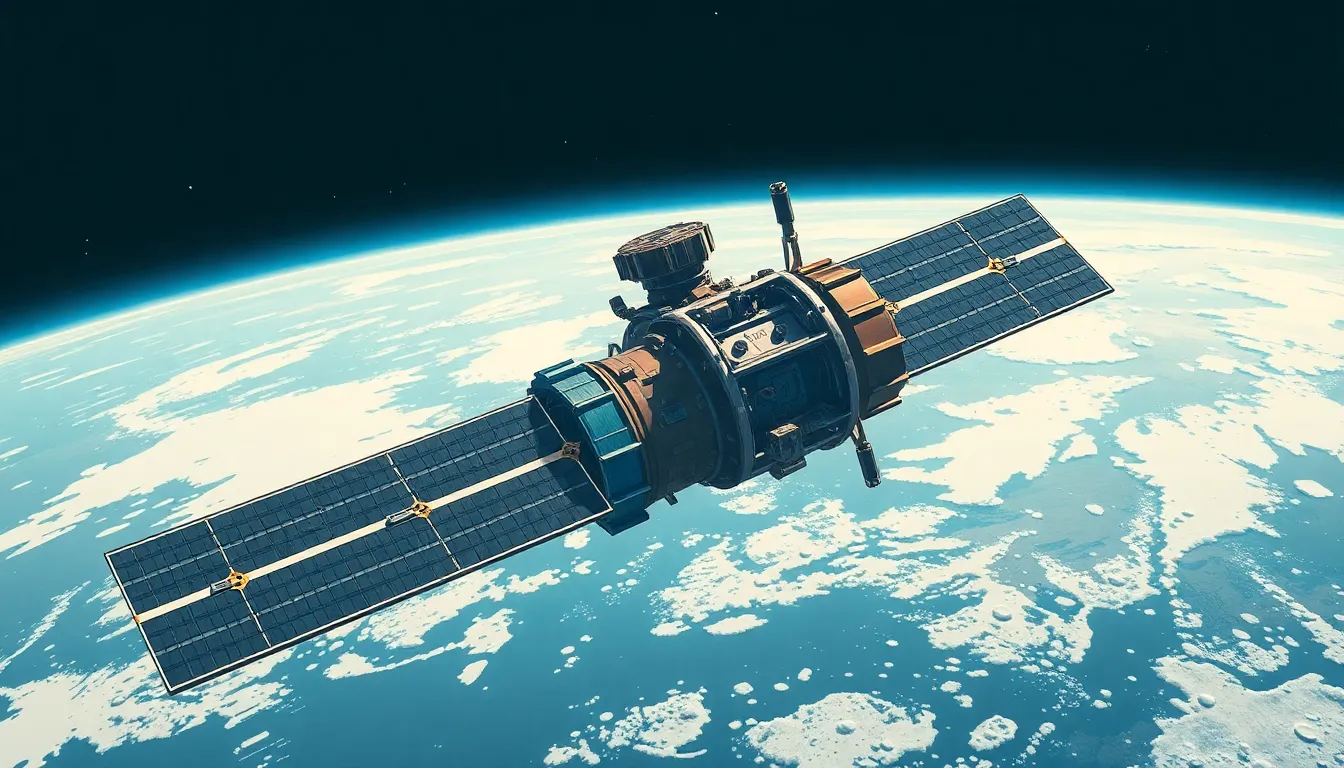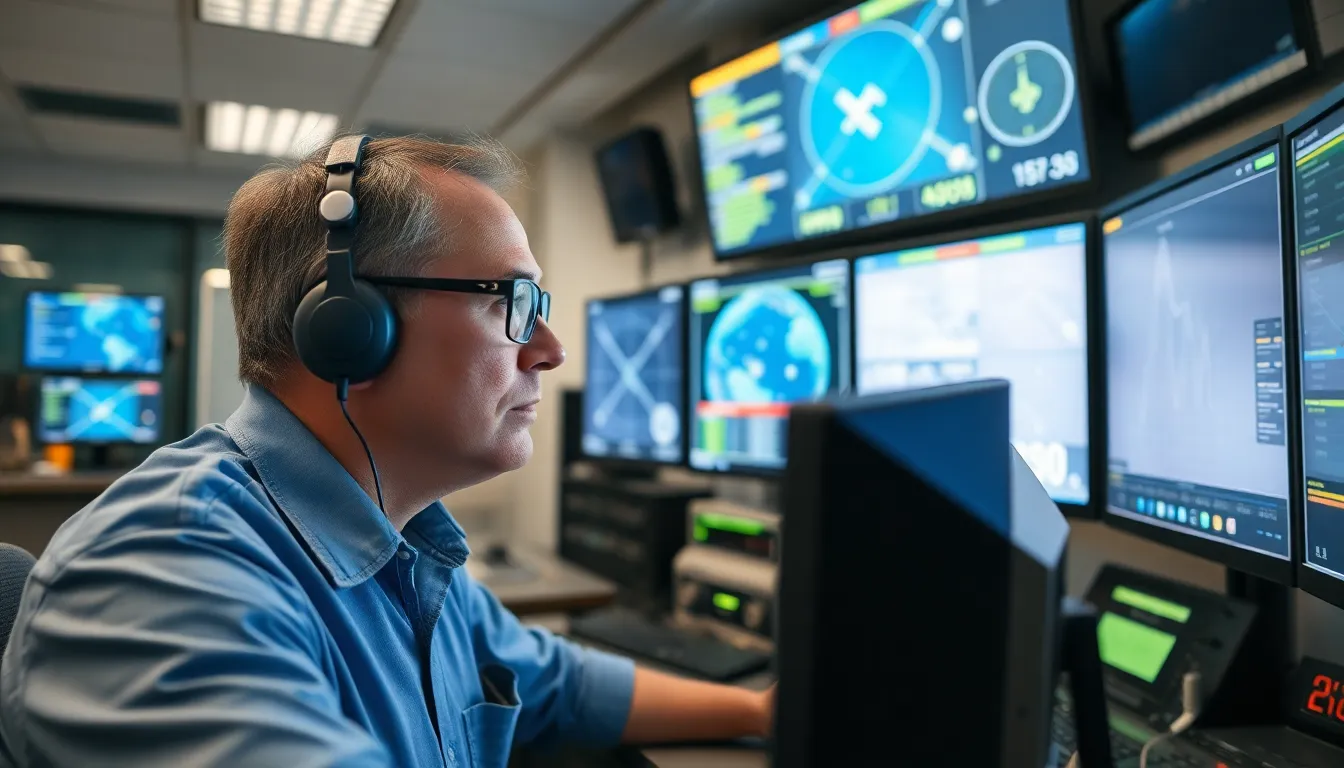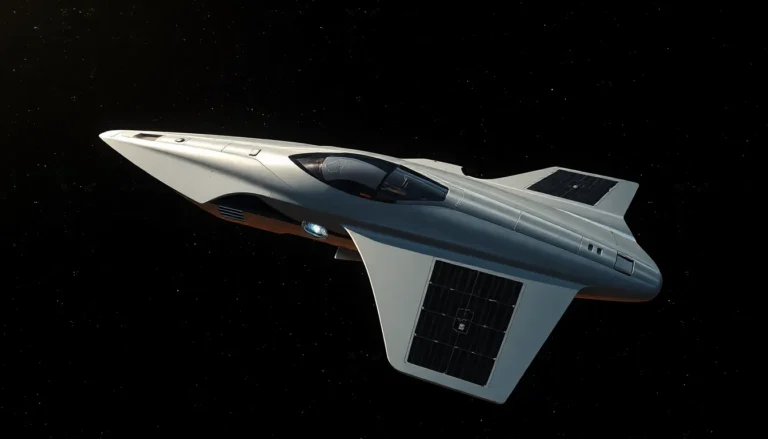Table of Contents
ToggleIn a world where satellites zip around like caffeinated squirrels, satellite control systems are the unsung heroes keeping them on track. These systems are the brains behind the operation, ensuring that our favorite space gadgets don’t end up lost in the cosmic void. From GPS navigation to weather forecasting, the importance of these control systems can’t be overstated.
Overview of Satellite Control Systems
Satellite control systems manage the operations of satellites, enabling their functionality for various applications. These systems play a vital role in ensuring satellites operate effectively within their designated orbits.
Definition and Purpose
Satellite control systems refer to the technologies and processes used to command, monitor, and control satellites in orbit. Their primary purpose involves maintaining a satellite’s orbital position, attitude, and operation. Engineers utilize ground-based control centers to send commands that regulate satellite functions like positioning antennas or managing onboard instruments. These systems ensure satellites remain functional and performing their intended tasks.
Importance in Space Operations
The importance of satellite control systems in space operations cannot be overstated. They support crucial activities such as orbit adjustments and collision avoidance. These systems help extend the operational life of satellites by enabling timely maintenance and adjustments. A timely response through control systems can mitigate risks and prevent loss of satellites, allowing continued services such as telecommunications and scientific data collection. Maintaining effective control ensures that satellite fleets operate smoothly and meet mission objectives efficiently.
Types of Satellite Control Systems

Satellite control systems can be categorized into different types based on their functionalities. Two primary categories exist: attitude control systems and orbit control systems.
Attitude Control Systems
Attitude control systems manage a satellite’s orientation in space. These systems utilize sensors to determine the satellite’s current position and adjust its roll, pitch, and yaw. Reaction wheels provide maneuverability by changing the satellite’s rotation speed, allowing precise positioning. Thrusters serve as another means, enabling rapid adjustments by expelling gas to create movement. Accurate attitude control is essential for maintaining communication with ground stations, as well as for stabilizing instruments used for observation and data collection. By ensuring optimal positioning, these systems enhance the satellite’s effectiveness and operational longevity.
Orbit Control Systems
Orbit control systems focus on maintaining and adjusting a satellite’s orbital path. These systems perform maneuvers to counteract gravitational influences and atmospheric drag. Thrusters are commonly used for orbital adjustments, allowing shifts in altitude or velocity. Proper orbit control helps prevent collisions with other objects in space and can extend a satellite’s operational life. Regular monitoring ensures that satellites maintain their designated orbits, which is crucial for mission success. Ultimately, effective orbit control systems ensure satellites fulfill their roles in various applications, from communication satellites to Earth observation missions.
Key Components of Satellite Control Systems
Satellite control systems rely on several key components to maintain optimal operation and functionality in orbit. Two critical elements include sensors and actuators, as well as control algorithms.
Sensors and Actuators
Sensors collect data on a satellite’s position and orientation. These devices include gyroscopes, star trackers, and sun sensors, which provide real-time information. Actuators respond to sensor data to adjust a satellite’s attitude or orbital parameters. Common actuators consist of reaction wheels and thrusters, which precisely alter a satellite’s orientation or trajectory. Effective interaction between sensors and actuators ensures satellites achieve accurate positioning, critical for communication and observation tasks.
Control Algorithms
Control algorithms govern the decision-making process within satellite control systems. These algorithms process sensor data and determine appropriate actuator responses. Various methods can be employed, including PID controllers and state-space representations, each tailored for specific applications. Successful implementation of control algorithms enhances maneuverability and stability. By optimizing satellite operations, these algorithms help maintain mission objectives while adapting to dynamic conditions in space.
Challenges in Satellite Control Systems
Satellite control systems face several challenges that impact their efficiency and effectiveness. Environmental factors and technological limitations significantly influence their performance and reliability.
Environmental Factors
Space presents harsh conditions that can disrupt satellite operations. Radiation exposure affects sensors, leading to inaccuracies in position data. Thermal extremes cause components to malfunction, which can impair system functionality. Additionally, gravitational variations occur due to the presence of celestial bodies, complicating orbit maintenance. Atmospheric drag, while minimal in outer space, still poses challenges for low Earth orbit satellites. These factors necessitate robust design and engineering solutions to ensure satellite resilience and longevity.
Technological Limitations
Technological constraints inherently affect the performance of satellite control systems. Limited processing power in onboard computers restricts the complexity of control algorithms. Communication delays between satellites and ground control centers hinder real-time adjustments, impacting mission responsiveness. Dependence on pre-programmed commands reduces adaptability to unforeseen situations. Actuator limitations, such as thrust capacity, influence maneuverability, which is crucial for collision avoidance. Addressing these technological challenges requires continuous innovation and development to enhance system capabilities and reliability.
Future Trends in Satellite Control Systems
Continuous advancements shape the landscape of satellite control systems. New technologies enhance operations and boost overall effectiveness in orbit.
Advances in Technology
Innovative sensor technologies play a crucial role in improving accuracy. Advanced algorithms refine data processing, allowing for quicker responses to environmental changes. Increased automation reduces the need for human intervention, leading to enhanced mission efficiency. Machine learning techniques provide adaptive solutions, optimizing control based on historical performance. Communication advancements, such as more robust satellite-to-ground links, enable real-time data exchange, enhancing decision-making processes. Finally, miniaturization of components lowers costs and improves accessibility for new satellite systems.
Emerging Applications
Expanding applications for satellite control systems emerge in various sectors. Earth observation greatly benefits from improved capabilities for disaster monitoring and environmental management. Communication networks utilize enhanced control systems for better signal quality, benefiting internet connectivity. Urban planning increasingly relies on satellite data for infrastructure development and resource management. Additionally, advancements in space exploration support missions to the Moon and Mars, requiring precise satellite management. National security initiatives also leverage satellite technologies for surveillance and reconnaissance, highlighting their importance in modern defense strategies.
Satellite control systems are vital for the successful operation of satellites in various applications. They ensure that satellites maintain their intended positions and orientations while adapting to the challenges of space. As technology continues to evolve, so do the capabilities of these systems, allowing for improved accuracy and efficiency in satellite operations.
The future promises exciting advancements in sensor technology and automation, which will further enhance satellite control. With the growing demand for satellite services across sectors, the importance of robust control systems can’t be overstated. These systems not only safeguard satellite missions but also contribute significantly to the benefits they provide to society.







